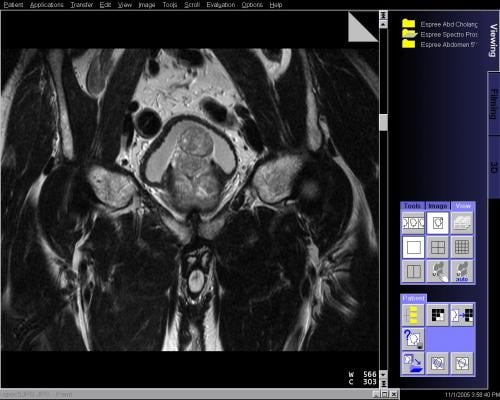
September 26, 2016 — In the largest study of its kind to date, researchers have identified and validated three distinct molecular subtypes of prostate cancer that correlate with distant metastasis-free survival. Identifying these subtypes can assist in future research to determine how patients will respond to treatment, according to research presented at the 58th Annual Meeting of the American Society for Radiation Oncology (ASTRO). Findings represent a step toward the implementation of personalized medicine in prostate cancer care.
To diagnose and determine treatment for prostate cancer, clinicians consider many factors, including a digital rectal exam, the prostate specific antigen (PSA) level in a patient’s blood and prostate tumor biopsy results. Molecular subtyping of tumor cells allows oncologists to individualize care and tailor treatment based on the actual biology of each patient’s individual disease.
“Tumors that appear similar under a microscope can behave very differently, from a clinical standpoint,” said Daniel E. Spratt, M.D., lead author of the study and chief of the Genitourinary Radiotherapy Program at the University of Michigan in Ann Arbor, Michigan. “One promise of genomic analyses is to elucidate subtypes of cancer based on the genetics of the tumor rather than merely how they look or what size they are.”
To identify genomic profiles for prostate cancer, researchers analyzed RNA expression patterns in 4,236 samples from nine separate groups of men treated with radical prostatectomy for localized prostate cancer. In an effort to create “intrinsic” subtypes specific to the cancer itself rather than the associated surrounding tissue, data were refined to remove non-tumor genes from the training (i.e., identification not validation) dataset. Through K-median clustering analysis, researchers identified three molecular subtypes of prostate cancer that could be characterized through a profile of 100 distinct genes, named the Prostate Cancer 100 (PC100) by study investigators.
“We were surprised to find that prostate cancer subtyped into only three very distinct subtypes,” said Spratt. “We knew that primary prostate cancer was a relatively quiet tumor, genomically, but similar cancers that are endocrine-driven, like breast cancer, have been shown to be able to be clustered into a finite number of subtypes.”
Researchers validated the subtypes across six additional retrospective cohorts, representing a variety of RNA sequencing platforms and tissue storage methods, and two prospective cohorts comprising 2,610 patients. The intrinsic subtypes were associated with androgen receptor (AR) activity, expression of the ERG oncogene and other known drivers of prostate tumor growth and progression, but researchers did not find a link from mutations or genetic rearrangements to the subtypes.
Rates of distant metastasis-free survival (DMFS) at ten years varied significantly among the three subtype groups. DMFS rates were 57.1 percent for subtype A, 64.4 percent for subtype B and 73.6 percent for subtype C (B vs. A: Cox Hazard Ratio (HR), 1.31, p = 0.02; C vs. A: HR, 1.65, p = 0.0001). After controlling for clinocopathologic variables, the profile remained independently associated with DMFS (B vs. A: Cox HR, 1.31, p = 0.026; C vs. A: HR, 1.33, p = 0.024). Additionally, multivariate interaction analysis determined that subtypes B and C shared a significant correlation with response to post-operative radiation therapy (RT) (Wald p = 0.0016).
“We have discovered and independently validated a highly stable 100-gene intrinsic molecular profile of prostate cancer that is both prognostic and predictive for radiation therapy,” said Spratt. “We believe that these subtypes reflect truly distinctive underlying biology and that this work represents a significant advance in our understanding of prostate cancer biology. Moreover, our findings identify numerous genes and enriched biologically active pathways in prostate cancer that have been underappreciated to date but may be potential targets to improve cure rates in this disease by developing new targeted therapies.”
For more information: www.astro.org


 December 11, 2025
December 11, 2025 









